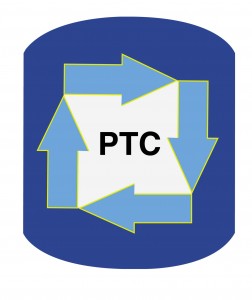This patent describes the PTC oxidative cleavage of a diol to an aldehyde in a protected glucofuranose molecule. The reaction works well with 10 mole% TBAB and a 20 mole% excess of periodate. We expect that if justified, further development effort could be invested that would reduce the excess periodate and reduce the catalyst loading.
Perchlorate is one of the anions that is near the top of the list of high affinity for quaternary ammoniun cations. Periodate should be even higher. As a result, PTC and periodate are very well matched for transfer to any organic liquid and then further activated once transferred out of water. Of course, periodate is already quite active without further activation.
It is conceivable that one could enhance safety and control using periodate and PTC by limiting the amount of phase-transfer catalyst or by adding the periodate even slower than three solid portions as described in the patent, possibly as a solution that is easier to add in a controlled manner. More effective leverage of the characteristics of PTC, including the high affinity of quats for periodate, should result in reducing the excess periodate. Higher atomic efficiency is possible.
PTC can also be used to recover the iodine value of the spent periodate, again due to the high affinity of iodine-based anions. This is described in a patent by our sister company shown at US Patent 6,846,946 by Joyce, Bielski and Halpern.
If your process development program needs to improve process performance and R&D efficiency to achieve low-cost, high-performance green chemistry, now contact Marc Halpern to integrate the highly specialized expertise of PTC Organics in industrial phase-transfer catalysis with your company’s commercial goals.
Please complete the project evaluation form shown at http://www.phasetransfer.com/projectform.pdf and send it to PTC Organics as shown on the form.


